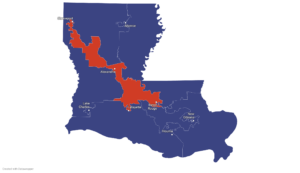(Official Advocate/Times-Picayune editorial, July 1) In the seemingly interminable turmoil over Louisiana’s congressional district shapes and boundaries, the U.S. Supreme Court left Louisiana in limbo last week. Rather than issuing a decision on the case of Louisiana v. Callais, which challenged the newly redrawn 6th Congressional District, the court ordered that it be reargued during its next term.
The result promises more political chaos, as Louisianans may well not even know where the district lines are for the 2026 congressional elections before the first candidate deadlines late this year. This outcome is unfair to voters and candidates alike. The high court should do all it can to expedite a decision as early in its next term as possible.
Justice Clarence Thomas’ interpretation of redistricting law may not be to everyone’s liking, but he was right to scold his colleagues for delaying a decision without explanation.
In a dissent from the court’s order, Thomas noted that “Congress requires this Court to exercise jurisdiction over constitutional challenges to congressional redistricting, and we accordingly have an obligation to resolve such challenges promptly.” Because the court’s own case law on redistricting has been particularly convoluted for decades, Thomas wrote, “that resolution is particularly critical here,” as “states do not know how to draw maps” that comply with all the prior decisions.

Louisiana legislators clearly have struggled with just that problem, as they have attempted to create constitutionally acceptable districts in two drastically different ways in just the past four years.
First they drew one that, just as it was after 2010, featured only one district with a majority of Black voters. Ordered by the courts to create a second Black-majority district based after the 2020 Census, they did so in time for the 2024 elections, leaving then-U.S. Rep. Garret Graves of Baton Rouge without a safe Republican district while creating an opening for Democrat Cleo Fields to return to Congress in the new Black-majority jurisdiction.
To do so, though, they created a district that snakes for 250 odd-shaped miles from Shreveport to Baton Rouge, leading some White voters to challenge the new district on the grounds that it is a racial gerrymander that lacks the “compactness” that other court decisions have required.
Louisiana thus may be stuck with two conflicting mandates: Create a second Black-majority district, but without using race as the guiding criteria. As we said, confusing….
The practical repercussions here go beyond even those described by Thomas, as the uncertainty could affect the choices that politicians beyond the 6th District make about their future plans. That doesn’t just affect them; it also affects the constituents they serve. … [The full editorial is at this link.]





